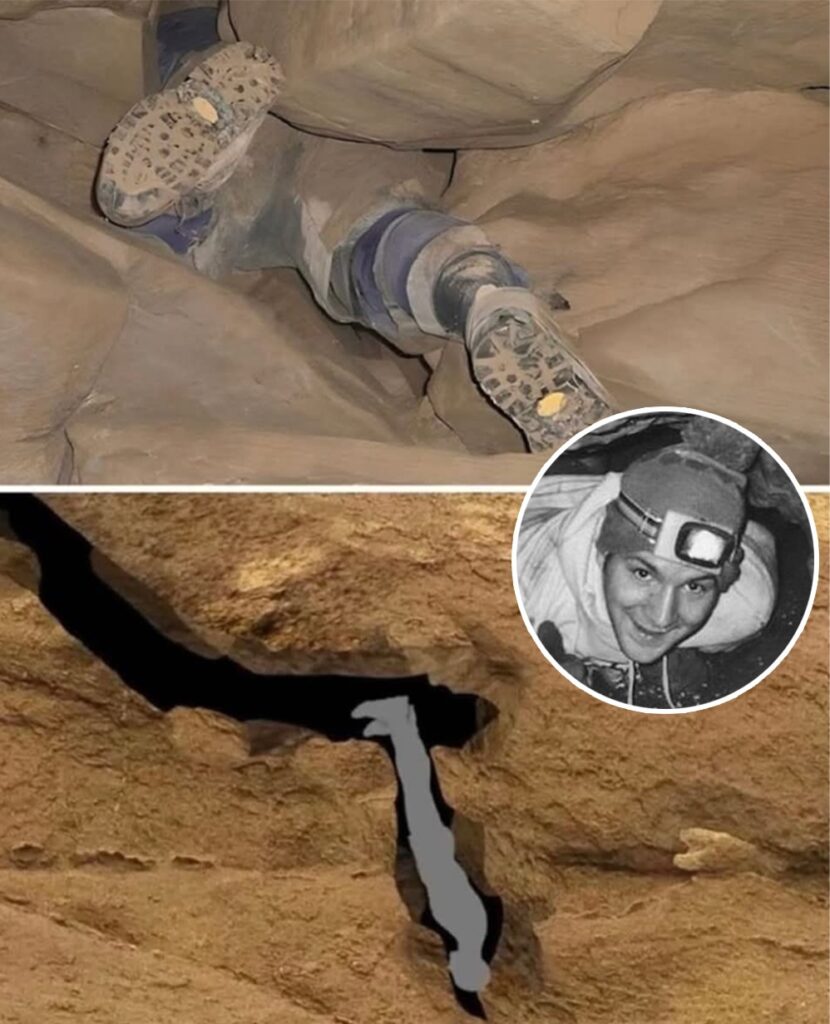

Here’s a 500-word version of your content, expanded with context and narrative detail while keeping the focus on John Edward Jones’s story:
He went headfirst into the cave, and never came back out. In 2009, 26-year-old John Edward Jones, an experienced and adventurous spelunker, embarked on what he thought would be an ordinary exploration of Utah’s Nutty Putty Cave. Known for its tight passages, twisting tunnels, and vertical drops, the cave had challenged explorers for decades—but John was confident. He had navigated similar caves before, familiar with the risks, prepared for the thrill. Yet, no amount of experience could prepare him for the moment that would turn the cave into a trap.
As he ventured deeper, the passages grew narrower. He found himself facing a vertical, almost claustrophobically tight section of rock, just ten inches across. Thinking he could squeeze through, John pressed forward, inching into the passage. Then came the instant that changed everything. A wrong twist, a small misjudgment, and he was stuck. Headfirst, upside down, his body wedged firmly against the rock. His arms were pinned beneath him, his legs unable to push or shift, his chest constricted. The weight of his own body pressing down made breathing difficult, and panic began to set in. He had fallen into a nightmare that no one could immediately reach.
Rescue teams were called, and they arrived quickly, fully aware of the complexity of Nutty Putty Cave. Hours passed as they assessed the situation, trying to determine the safest way to free him. Pulley systems were rigged, drills were brought in, and countless volunteers crawled through the narrow tunnels to reach him. They worked tirelessly, communicating over radios, coordinating every angle. But the cave was merciless. Every inch of rock seemed fixed, unyielding. Every maneuver risked pushing him further into the constriction, endangering both John and the rescuers.
Time became the enemy. John endured the unimaginable, trapped upside down for hours, every second crushing his body, making it harder to breathe, harder to hold on. The rescuers refused to give up, tirelessly attempting every conceivable method to extract him, fighting against physics and the unmovable stone. Yet, despite their experience, their tools, and their determination, the passage refused to release him.
After 28 harrowing hours, the rescue effort came to a devastating conclusion. John Edward Jones had passed away, his life claimed by the cave he had loved so much. His body remains entombed in Nutty Putty Cave, the very place that had both fascinated and trapped him. In the aftermath, the cave was permanently closed, sealed to prevent future tragedies, becoming a solemn monument to his fate. It stands as a reminder of the dangers of spelunking, the unpredictability of nature, and the fragility of life in the face of seemingly insurmountable circumstances.
John’s story is told as both a cautionary tale and a testament to human courage—his final adventure frozen in time, headfirst into the earth, leaving a mark on all who hear it, and on the cave itself, which now holds him forever.


